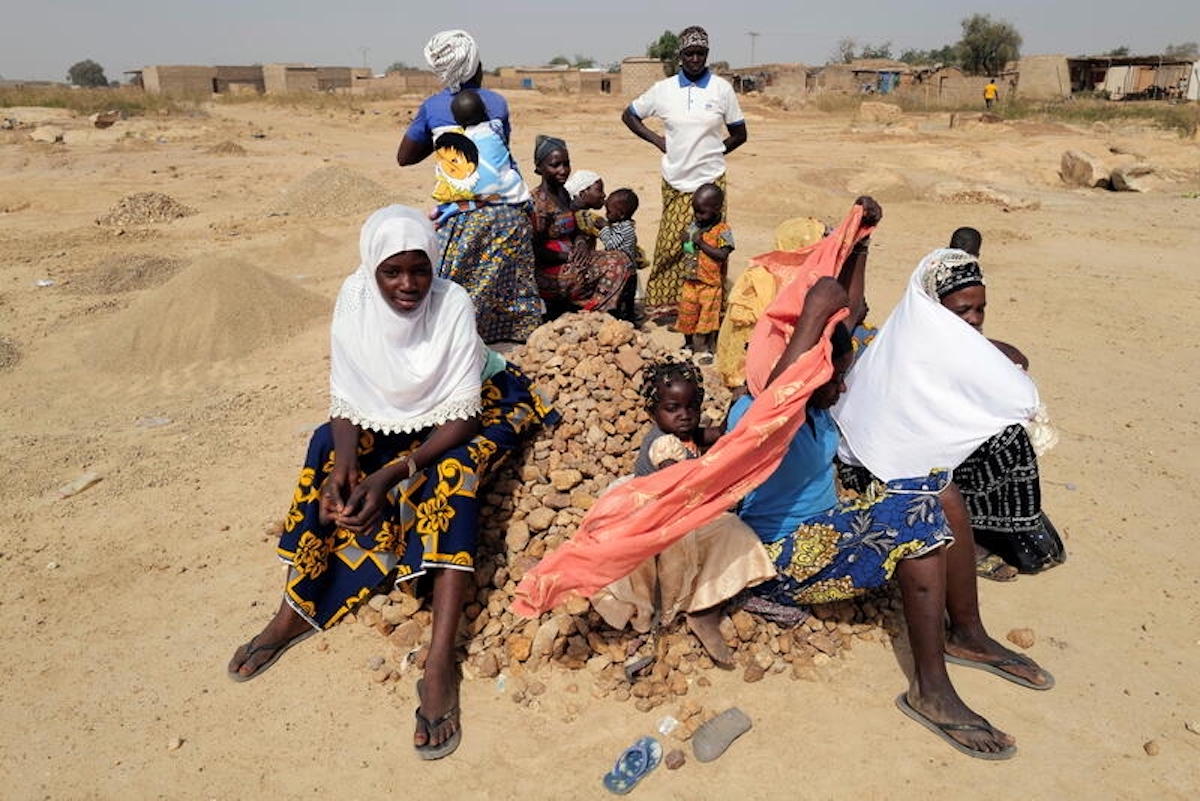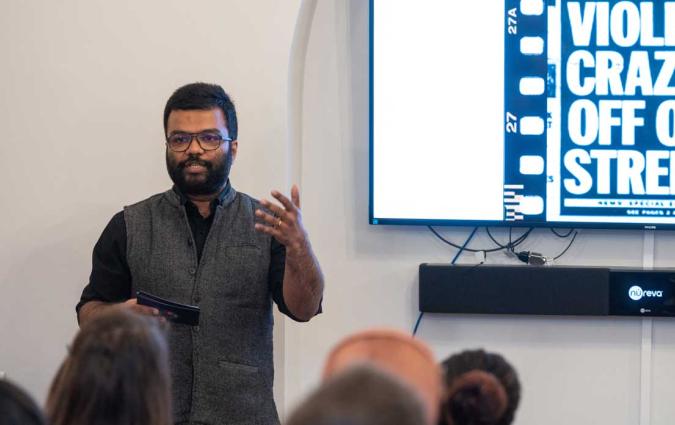In this piece
Unseen shadows: The plight of journalists in Burkina Faso's conflict zones

Women and their children, who fled from attacks of armed militants in Soum province of Sahel Region, at an informal camp for displaced people on outskirts of Ouagadougou, Burkina Faso in 2020. REUTERS/Zohra Bensemra
In this piece
History of the conflict | Journalism on the frontline | Gauging comprehension of trauma among Burkinabè reporters | The need for support in newsrooms | ConclusionJournalists in Burkina Faso are operating in an environment fraught with physical and emotional risks. As sentinels, bridges, eyes, and ears for the people, they often get dangerously close to conflict zones, risking their lives to report accurate information.
Yet no support is available to those dealing with the repercussions of the job. I experienced this first-hand after witnessing the violent death of two soldiers, with whom I had been embedded at the frontline, after they stepped on an improvised explosive device (IED).
History of the conflict
Burkina Faso's unprecedented security crisis began as small acts of banditry following the resignation of President Blaise Compaoré in 2015. It has escalated into a severe situation with numerous coups and terrorist attacks.
The conflict has resulted in over 7,600 deaths and displaced more than 2 million people, as reported by the UNHCR. Despite multiple coups supposedly aimed at addressing the security situation, the crisis continues to worsen, with a significant increase in internally displaced persons.
The country faces a predominantly jihadist threat in the Sahel region, primarily from two terror groups: JNIM (Jama'at Nasr al-Islam wal Muslimin) affiliated with Al Qaeda, and EIGS (Islamic State in the Greater Sahara), which pledged allegiance to the Islamic State.
In response, the current armed force led by Captain Ibrahim Traoré has enlisted civilians as Volunteers for the Defence of the Homeland (VDPs), but the conflict continues to spread – with over 200 attacks in 2022 alone.
Journalism on the frontline
According to Reporters Sans Frontières, five journalists have been killed in the Sahel in the past decade, and six have gone missing. Dart Centre Asia Pacific highlights that journalists, like first responders, face immense pressure but often lack the training to recognise the psychological impacts of their work.
Dr Anthony Feinstein's 2002 study of 140 war journalists found a lifetime prevalence of PTSD at 28.6%, with 21.4% experiencing major depressive episodes and 14.3% reporting substance abuse. Despite the intense risks, there is limited focus on the mental health of journalists compared to soldiers.
Gauging comprehension of trauma among Burkinabè reporters
PTSD is a clinical diagnosis of moderate to severe psychological disorders resulting from traumatic experiences. Defined in the DSM-III in the 1980s, PTSD research initially focused on Vietnam War veterans. Today, it is recognised that journalists covering conflicts also face significant risks of developing PTSD. Symptoms include intrusive memories, avoidance of trauma-related cues, negative changes in thinking and mood, and changes in physical and emotional reactions.
To understand the impact of trauma on Burkinabè journalists, I conducted a survey of 56 journalists and interviewed editors at major newsrooms. The survey revealed that 83% of journalists polled had been to the frontline, yet 73% had received no training for the risks involved.
Furthermore, 65% reported exposure to traumatic imagery or events, and yet 63% had never heard of PTSD.
Journalists exposed to traumatic events often experience symptoms of distress, including anxiety, nightmares, and heightened sensitivity to noise. For example, hearing a metallic clank can trigger traumatic memories. The Dart Center for Journalism & Trauma identifies signs of unresolved PTSD as intrusive re-experiencing, nightmares, physical reactions, reduced concentration, and emotional numbness.
The need for support in newsrooms
The survey highlighted a significant lack of psychological support in Burkinabè newsrooms. 88% of journalists reported having no access to psychological support, though 90% would use such services if available externally.
Peer support and management-level provisions are crucial in creating a supportive newsroom environment. The Dart Center suggests that having dedicated support resources can enhance journalistic resilience and productivity.
Journalists who visit conflict zones are in a state of high alert due to dangers like IEDs. Poorly managed trauma can lead to severe consequences such as substance abuse and suicidal thoughts. Organisations like the BBC offer programmes like Trauma Risk Management (TRIM) to help reporters process their experiences, but such resources are non-existent in Burkina Faso, and online French-language programmes are hard to come by.
To address trauma in West African newsrooms, it is essential to provide training on the impacts of handling dangerous situations – just as we should provide first aid training to journalists visiting the frontline.
Journalism schools should incorporate trauma-informed literacy in their curricula. Moreover, a centralised resource for journalistic wellbeing across West Africa could offer training, peer support, and confidential referrals for mental health support.
Conclusion
This project underscores the urgent need for Burkinabè newsrooms to recognise the psychological toll of reporting on conflict and to implement support mechanisms for their journalists.
By educating journalists and providing necessary support, we can ensure their resilience and ability to continue their crucial work.
For more detailed survey results, insights and recommendations, please refer to the full project, available as PDF below.
In every email we send you'll find original reporting, evidence-based insights, online seminars and readings curated from 100s of sources - all in 5 minutes.
- Twice a week
- More than 20,000 people receive it
- Unsubscribe any time


